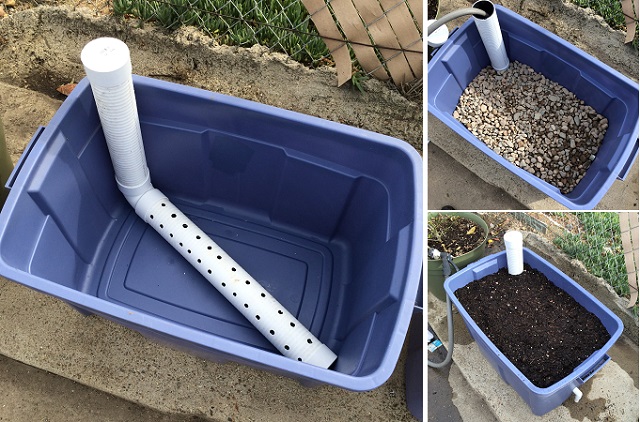When it comes to gardening, the method of watering your plants plays a pivotal role in their health and overall productivity. While the conventional approach involves watering from the top, there’s a lesser-known technique that offers numerous benefits: wicking beds.
In this article, we’ll explore the two primary reasons why wicking beds are gaining popularity over traditional watering methods and provide insights into building your self-watering container garden.
Preserving Water and Saving Money
One of the compelling reasons to embrace wicking beds is their ability to conserve water effectively. Unlike standard top-watering, which allows moisture to evaporate into the air – often more than you might realize – wicking beds minimize water loss.
They achieve this by ensuring that the water doesn’t evaporate at the surface. Instead, the roots draw in the moisture before it reaches the top layer of soil. This water-saving feature not only benefits the environment but also your wallet, especially if you’re responsible for paying your water bills.
Reduced Watering Frequency
The second significant advantage of wicking beds is their reduced watering frequency. When properly designed and maintained, wicking beds typically require watering only once a week, if not less often. Essentially, they have the capacity to self-water throughout the week, alleviating the need for daily attention to your garden’s hydration needs.
This convenience becomes even more valuable when you have multiple wicking beds or large garden beds to tend to. Adequate watering is particularly critical during scorching summers or when you’re nurturing young or recently transplanted plants. With wicking beds, you can spend less time worrying about daily watering and more time enjoying your garden’s lush greenery.
Building Your Self-Watering Container Garden
Creating a self-watering container garden using wicking beds is a rewarding project that doesn’t require a significant investment of time or resources. Here’s a simplified guide to get you started:
- Materials and Tools: Gather the necessary materials, including containers or beds, a water reservoir (usually a pipe or a lower container), a wicking barrier (geotextile fabric or weed matting), a soil mix (compost, sand, and soil), and the plants you wish to cultivate.
- Container Preparation: Ensure your chosen container has drainage holes, and if not, create them to prevent waterlogging. Place the water reservoir at the bottom of the container. This will serve as the water source for your wicking bed.
- Wicking Barrier: Lay down the wicking barrier over the water reservoir. This prevents the soil from directly contacting the water, promoting capillary action.
- Soil Mix: Prepare a well-balanced soil mix by combining compost, sand, and soil in equal parts. Fill the container with this mix, leaving some space at the top.
- Planting: Plant your desired vegetables, herbs, or flowers in the soil mix. Ensure they are well-watered initially.
- Water Reservoir Access: Create a small hole or access point to the water reservoir near the edge of the container. This will allow you to replenish the water supply as needed.
- Mulch: Apply a layer of mulch on top of the soil to reduce evaporation and maintain consistent moisture levels.
- Initial Watering: Water the soil thoroughly after planting. This will help establish the capillary action between the soil and the water reservoir.
- Monitor and Refill: Keep an eye on the water reservoir and refill it when necessary to ensure a steady water supply to your plants.
By following these steps, you can set up a self-watering container garden using the wicking bed method, helping your plants thrive with minimal effort on your part.
Wicking beds offer a sustainable and efficient solution for nurturing a thriving garden while conserving water and reducing the need for daily watering. The advantages of water preservation and reduced watering frequency make wicking beds an attractive option for gardeners looking to simplify their gardening routines and contribute to environmental conservation.
Building a self-watering container garden using wicking beds is a rewarding endeavor that can enhance your gardening experience and yield healthy, vibrant plants. So why not explore the world of wicking beds and experience the benefits firsthand? Your garden and your water bill will thank you for it. Check out the video below for an example…
If you like this idea, be sure to share it with your friends and inspire someone you know. Anything becomes possible with just a little inspiration…

